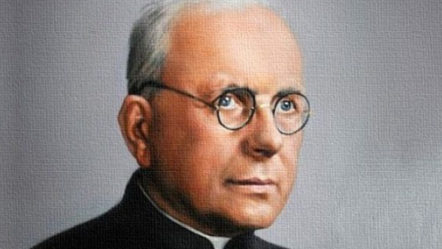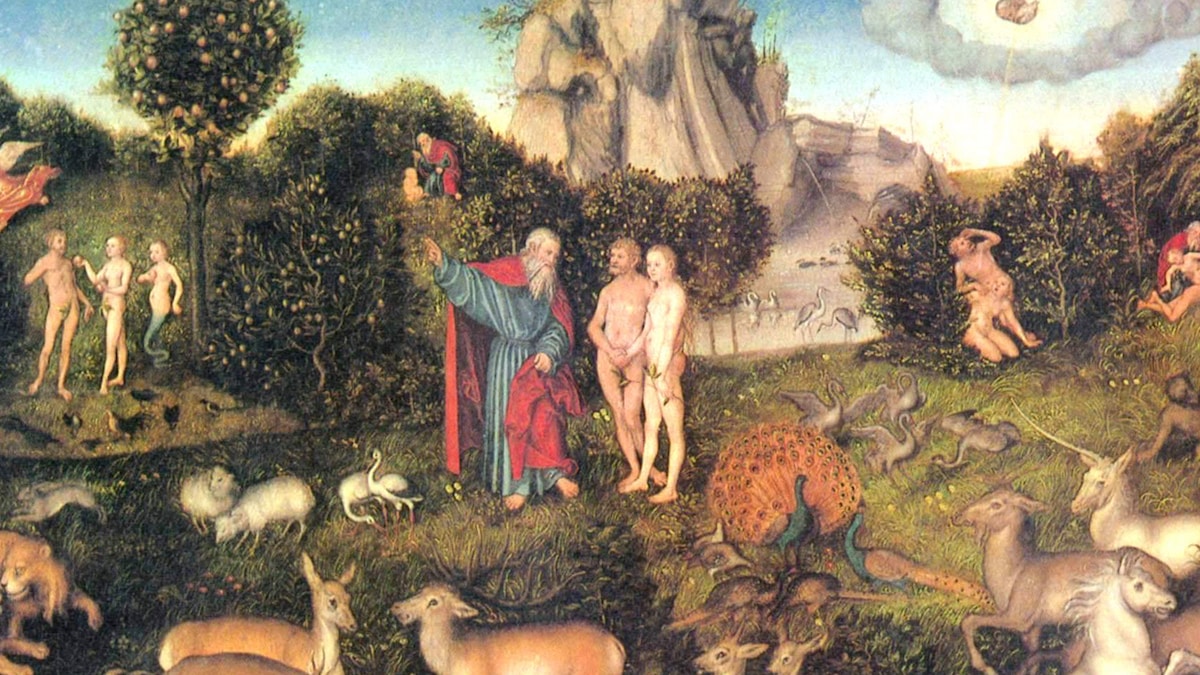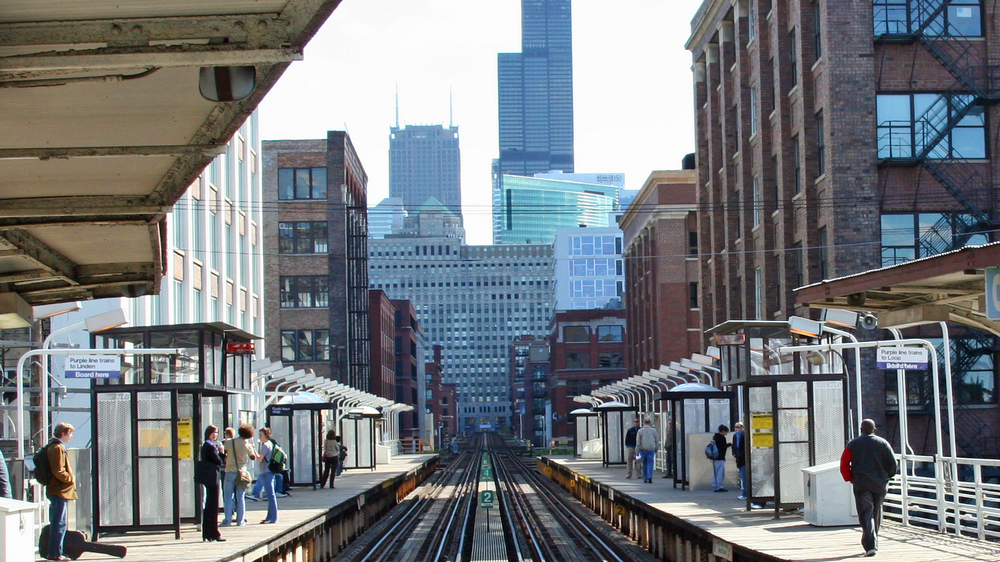“Mankind will not have peace until it turns with trust to My mercy” (Diary, 300)
When we think about the Divine Mercy image or chaplet it is difficult to overlook the powerful influence of the remarkable individuals of faith Saint Maria Faustina Kowalska (1905-1938) and Blessed Michael Sopocko (1888-1975).
Blessed Michael (Michał) came into the world in Nowosady, a village near Wilno (Vilnius). Growing up in a devout and patriotic environment, Michael was deeply influenced by his religious upbringing. Fueled by a profound calling to serve God and the Church unconditionally, he embarked on a path that led him to the Major Seminary. On June 15, 1914, he was ordained as a priest, marking a significant milestone in his journey. In his pursuit of knowledge, he went on to earn a doctorate in moral theology from the University of Warsaw. Afterwards he became the Spiritual Director of the Seminary in Wilno.
Throughout his extensive life, Father Sopocko suffered innumerable setbacks and constant ridicule for promoting the message of Divine Mercy. However, Faustina`s visions not only enabled him to discern God’s plan but also reinforced his staggering faith. His life serves as a testament to the notion that extraordinary divine intervention is frequently necessary for the manifestation of God’s magnificent works.
Jesus first appeared to St. Faustina Kowalska on Feb. 22, 1931. From that day on, she repeatedly experienced mystical visions of Jesus but no one believed her. It was a heavy cross to bear, and she prayed to God that someone would be sent to her to help sort through everything and transmit the messages she was receiving.
On one occasion she records in her Diary how her prayer was answered.
“One day I saw him in our chapel between the altar and the confessional and suddenly heard a voice in my soul say, “This is the visible help for you on earth. He will help you carry out My will on earth.” (Diary, 53)
Initially Fr. Sopocko disregarded her story and subjected her to a test, by making Sister Faustina, with the permission of the Superior, look for another confessor. After some time, the nun came back to him and said that she would endure anything, but she would never leave him again.
From the time Fr. Sopocko became Sister Faustina`s confessor she never stopped amazing him. For example, it was a complete surprise for him that she had known he was going to resign from his role as confessor to the convent of the Sisters of Our Lady of Mercy, despite the fact that the priest had not revealed this to anyone. One day she came to dissuade him from doing so. Many of her numerous prophecies concerning Fr. Sopocko were to be fulfilled later.
Sister Faustina`s mission to proclaim the message of Divine Mercy to the world was inextricably linked with Fr. Sopocko. Together, they have become an integral part of the Church’s spiritual map. As Sister Faustina had prophesied, her earthly journey came to an end, but it was then that Fr. Sopocko`s role become pivotal, serving as the linchpin in the widespread propagation of this vital message.
On Friday April 26, 1935, he gave his first sermon on Divine Mercy, and he unveiled the first image of Divine Mercy painted by Eugeniusz Kazimierowski on Sunday, April 28, 1935, which was the Second Sunday of Easter, the day Jesus asked to be named “Divine Mercy Sunday.”
In paragraph 90, Jesus unfolds to Sister Faustina much of the suffering that the priest was to endure.
One day, I saw interiorly how much my confessor would have to suffer: friends will desert you while everyone will rise up against you and your physical strength will diminish. I saw you as a bunch of grapes chosen by the Lord and thrown into the press of suffering. Your soul, Father, will at times be filled with doubts about this work and about me. I saw that God Himself seemed to be opposing [him], and I asked the Lord why He was acting in this way toward him, as though He were placing obstacles in the way of his doing what He Himself had asked him to do.
Father Michael many times expressed genuine sympathy and admiration for Marshal Józef Piłsudski(1867-1935). Once the priest even had a personal conversation with Piłsudski, as a result of which he received a substantial funding for construction of a new church for military personnel in Wilno. Yet, it was a complete surprise for him when he learned from Sister Faustina secrets concerning this man.
The great of this world are often marveled at by people. God knows all things, and we must leave the judgment in His righteous hands. The dreadful vision of the demise of a well-known Polish military leader and statesman contains this sober reminder.
Then I saw a soul which was being separated from its body amid great torment. O Jesus, as I am about to write this, I tremble at the sight of the horrible things that bear witness against him…. I saw the souls of little children and those of older ones, about nine years of age, emerging from a muddy abyss. The souls were foul and disgusting, resembling the most terrible monsters and decaying corpses. But the corpses were living and gave loud testimony against the dying soul. And the soul I saw dying was a soul full of the world’s applause and honors, the end of which are emptiness and sin. (Diary, 425)
As the Blessed recalls – “A few days after the Triduum at the Gate of Dawn, Sister Faustina told me about what she had experienced during the ceremony, which is described in detail in her diary. Then, on the 12 May, she saw the dying Marshal J. Piłsudzki in spirit and she told me about his great suffering. She claimed that the Lord Jesus had showed that to her and that He had said: “Look, this is how the greatness of this world ends”.Then she saw when the Marshal was judged and when I asked what the verdict was, she replied: “It seems that, through the intercession of Our Lady, Divine Mercy won”.
Soon after, the great difficulties allied to Fr. Sopocko`s stay at Saint Michael’s church in Wilno, which had been foretold by Sister Faustina, began. They were getting more and more intense and, in January 1936, came to climax. He told almost nobody about these problems and only at that critical time id the priest ask Sister Faustina for prayer. Much to his astonishment, on that very day, all the obstacles vanished. She claimed to have shouldered all his anguish on her own.
When in mid-September 1938 Fr. Sopocko was taking part in a Conference of Theology Departments in Kraków he visited an infectious diseases hospital in Prądnik and found Sr. Faustina prepared for death. The priest touched briefly on the Congregation she wanted to create, stressing that it might have been only an illusion, as well as perhaps all the other things she talked about. Sister Faustina promised to talk about it to the Lord in prayer.
“On the next day I held a mass for Sr. Faustina, during which it came to my mind that just like she had not been able to paint the picture, but had only given directions, so she would not be able to establish the new congregation, but only gave general guidelines; the urges in turn, meant that the new Congregation was a necessity in the coming times. The next time I came to the hospital and asked if she had anything to say on the matter, she replied that she had no need to speak since Our Lord Jesus had already enlightened me during the Mass.” (Wspomnienia o Świętej Siostrze Faustynie Kowalskiej, M. Elżbieta Siepak OP)
He goes on to say: “Then she instructed me to focus primarily on establishing the feast of the Divine Mercy on the first Sunday after Easter. She advised me not to overly concern myself with the new Congregation and assured me that I would receive clear indications regarding the necessary actions and the individuals involved. She pointed out that during the sermon I delivered on the radio that day, my intention was not entirely pure (in fact she was right) and emphasized that I should prioritize purity throughout the entire matter. She revealed that she had witnessed me taking the vows from the first six candidates of this Congregation in a small wooden chapel at night. Furthermore, she disclosed her imminent passing away, having fulfilled all she needed to say and write. Before that she described to me what the little church and the house of the first Congregation would look like and she lamented over the fate of Poland, which she loved so much, and she frequently prayed for.”
Fr. Michael did not dare to ask Sister Faustina what fate would await Poland and she did not tell him but with a sigh she covered her face in horror at the image she probably saw then. According to the priest almost everything she foretold concerning the Congregation came true with great accuracy. On November 16, 1944, he received the private vows of the six candidates in the wooden chapel of the Carmelite Sisters. Three years later he came to the first house of this Congregation in Myślibórz. All in all, he was amazed by the striking resemblance to what she had told him before.
Fr. Michael Sopocko was beatified on Sunday September 28, 2008, in Bialystok, Poland, after Pope Benedict XVI approved a miracle through his intercession.
How can soulless matter make correct predictions about the future and deeply penetrate somebody’s mind?
It is a fertile field for asking this thought-provoking question to a wide range of atheists and non-believers who might come across the figure of the Saint, Sister Faustina Kowalska.
A postscript:
Saints are of great encouragement and help to us.
At the Sanctuary of Divine Mercy, during the Holy Mass of thanksgiving commemorating the 28th anniversary of the rescue of Bialystok city after the derailment of a train carrying concentrated chlorine, Archbishop Edward Ozorowski shared a profound insight.
“God’s mercy is not a one-off action, nor is it confined to moments when someone seeks it, it encompasses His continuous presence and vigilant care over humanity,” he said.
On March 9, 1989, the city experienced the most dramatic event in its modern history. Near the place where Father Michael Sopocko had spent the last 28 years of his life, a derailment occurred involving four 50-ton railroad chlorine tankers, part of a train transporting 15 such tanks from the Soviet Union to the GDR. Experts highlight the potential catastrophic consequences had there been a hazardous substance leak, endangering the lives of the city’s inhabitants and those residing within several kilometers. Local firefighters consider this incident among the most challenging rescue operations they have ever faced.
Today, at the railway embankment, stands a marble cross with the inscription “Jesus I trust in You”.
Many Polish Catholics in Bialystok hold a belief that the avoidance of this catastrophe can be seen as a miracle attributed to God’s mercy and the intercession of the Blessed Fr. Michael Sopocko.








